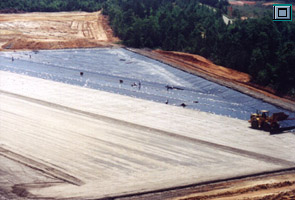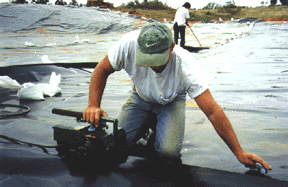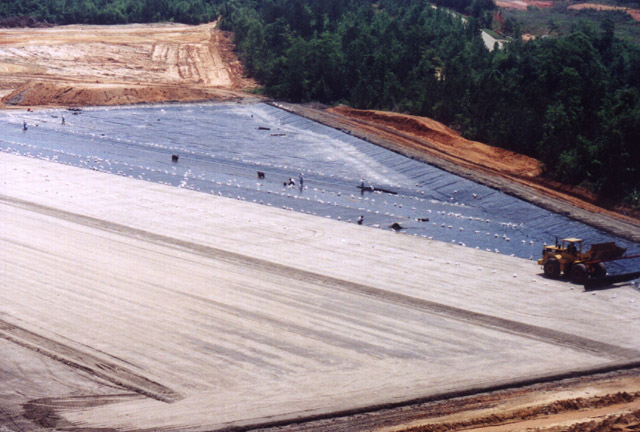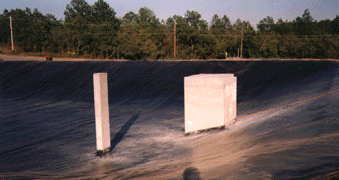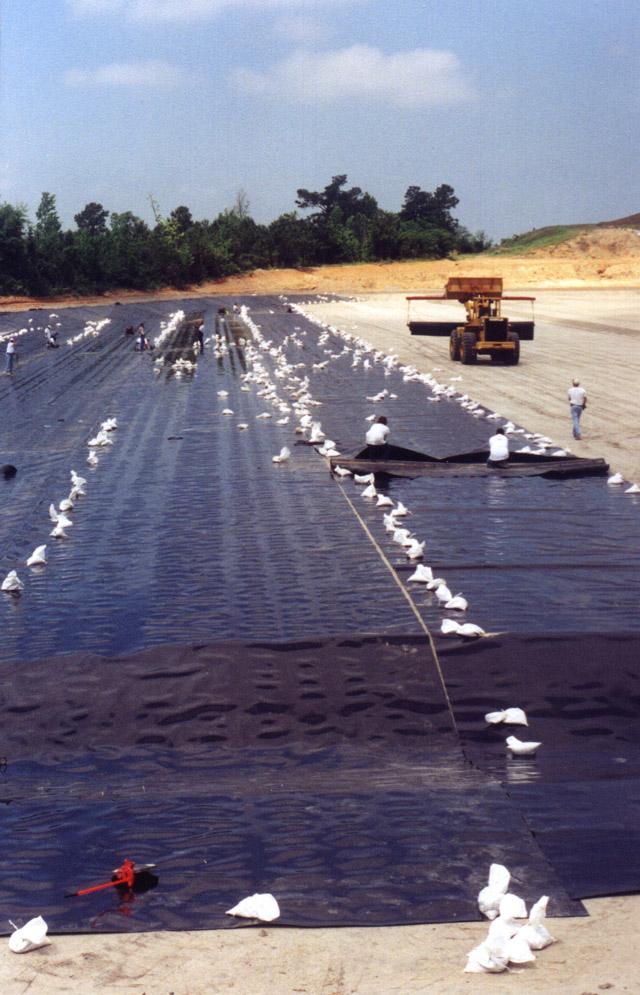PE Geomembrane is utilized for a variety of containment applications.
HDPE resin is formulated for Ultraviolet and Ozone resistance and is an excellent geomembrane to use in an exposed environment. An HDPE geomembrane is resistant to a wide range of chemicals. This particular geomembrane is typically deployed in very large projects and is widely used for leachate containment in landfill and mining operations. Pond liners incorporate HDPE as a very cost effective way of lining earthen basins for recreational ponds, industrial process water, and containment purposes such as wastewater ponds.
The HDPE geomembrane is produced in a 24′ roll width. Styles include smooth, as well as single-sided and double-sided textured surfaces. Mil thicknesses ranging from 40 to 100 mil. Considering the wide roll width this geomembrane may be deployed over large areas in a relatively short period of time. The installation of an HDPE Geomembrane must be accomplished with specialized seam welding equipment in the hands of trained technicians. Testing of seams also requires various testing apparatuses that are designed to perform different tests such as peel, shear, vacuum, and spark testing. The actual test to be performed is determined by the seam type and the intended application. Seams are made with wedge welders on long and straight field seams. Extrusion welders are utilized for detail seams, pipe boots, etc. It is very important that an HDPE membrane be installed by experienced technicians that are familiar with inherent factors to this particular geomembrane. Factors such as expansion / contraction influences, welding parameters, quality control procedure, documentation, etc. are taken into consideration.
Design engineers should consider previously installed square footage as a factor when qualifying an installer. This may be a reasonable indicator of the installer’s experience but it should also be considered that a company does not necessarily maintain identical capabilities from year to year. Previously installed square footage also does not reflect the quality of the work performed by said company. We believe that the most important criteria is likely reflected by project references, which should be provided by an installer for comparable projects, regarding complexity and scope-of-work.
The typical pond liner and landfill impoundment is surrounded by an earthen berm with the geomembrane extending into an anchor trench that is excavated along the upper edge of its slopes. A typical anchor trench is 12″ wide and 24″ deep, although for steep or long slopes the trench dimensions may be greater. The geomembrane may be attached to existing concrete with steel battens and to new concrete with an embedded HDPE channel. Pipe boots are fabricated to provide for an HDPE sleeve which compression seals the geomembrane to a dissimilar pipe, or may be extrusion welded to an HDPE smooth wall pipe.

